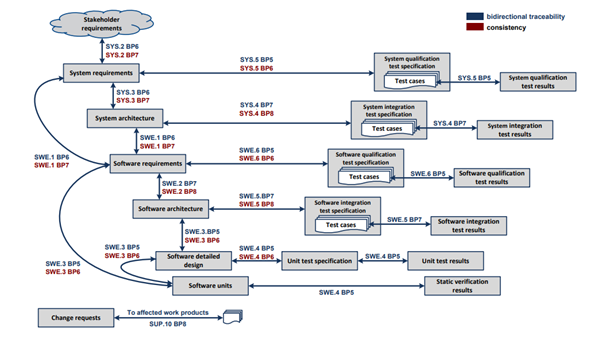- sales@embitel.com
- +91 8041694200
ASPICE Compliant Functional Testing of Automotive Warning Light System
About The Customer
Our customer is an automotive Tier-1 supplier of vehicle ECU, lighting, and other automotive parts. We have had a long-standing partnership with the customer for projects involving ISO 26262 compliance, application development and more.
Business Challenge
ASPICE compliant testing of the warning light system was at the core of the business challenge faced by the customer. When it comes to automotive software testing, ASPICE brings in a major change in the approach to testing methodologies and processes.
Our customer wanted to follow the ASPICE process flow while testing the warning light system. ASPICE compliance entails devising a test plan that ensures bi-directional traceability between the test specifications and software requirements. Extensive expertise in tools like IBM Doors, JIRA, and Vector CANoe was also required for which our customer was looking for a suitable technology partner. Since we had a dedicated team of test engineers with expertise in all the required tools and technologies, we got on-board.

Embitel’s Solution
A team comprising automotive test engineers with ASPICE expertise took up the project. The first step was to create a master test plan with complete test strategy compliant to ASPICE standard. It would act as a reference document for all stakeholders involved in the project.
A snapshot of the master test plan (MTP):
- MTP describes the different test levels including software and system tests and static code analysis
- Test strategy for unit, integration, and software qualification tests
- Details of test scope, requirements and methods are explained
- Test outcomes and failure handling approach are clearly explained
According to the master test plan, our test engineers prepared the test cases based on the requirements. 3 conditions for each test case were defined- test steps, expected behavior and test outcome (pass/fail).
Configuration management for the test program was performed using tools like IBM doors and JIRA. Since ASPICE mandates bi-directional traceability between the tests and the requirements, the testing team made use of these tools to ensure this.
With the help of Vector CANoe tool and CAPL scripting, the test cases were executed, and comprehensive test report was generated. The main deliverable for the customer was the review document that contained report for every test case – whether passed or failed.

Embitel’s Impact:
Our customer was able to obtain all work products mandated by ASPICE with respect to the software testing/qualification. Since the testing was performed using specialized tools, the time-to-market as well as the overall cost of the project was optimum.
Tools and Technologies:
VT System: VT System is a test system by Vector for automating different types of automotive ECU verification and validation.
Vector CANOe: A software tool for testing ECU software and networks.
IBM Doors: It is a requirement management tool that helps track test modules and manage test definitions.
JIRA: It’s a work management tool that helps manage test requirements to test case management.


















